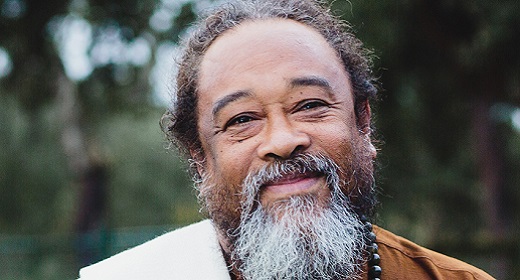by Deepak Chopra: The state of loneliness can be crippling. Though the majority of people don’t find themselves consumed by it, they do feel its effects.  Their inner worlds shrink and dry up. For others, the issue looms over them like a specter in the future rather than as present reality.
Their inner worlds shrink and dry up. For others, the issue looms over them like a specter in the future rather than as present reality.
The only real answer to loneliness is to experience your own fullness. Then and only then can you be sure that you will not look inside one day to find holes, gaps, unanswered fears and a sense of lack. Here are steps that enable you to become true to yourself. They aren’t magic bullets, and I recognize that loneliness, like every other psychological state, has degrees of severity. But whether you look on being lonely as a mild or severe issue, the same solution applies. The three steps are given in no order of priority; consider adopting all of them.
Step 1: Have a Vision That You Devote Time to Every Day
Happiness experts often advise that the best way to have a happy life is to have a happy day. I’d modify this a little. The best way to have a happy life is to have a happy day that looks forward to tomorrow. The future is something you build toward, and the place where you build is inside yourself. Society offers a different image, telling us that we should work hard for 20 or 30 years, postponing fulfillment until the end. This makes little sense to me. Why wait for golden years on the chance that you will still be strong, optimistic and full of promise? It’s much easier to be that way now. Use your present energies to build your future in the following ways:
- Write down a single vision, project or mission.
- Set time aside every day to work on it.
- Make sure that work consists of doing research; making connections; investigating your target audience or market; learning from projects similar to yours; challenging your assumptions; writing a proposal; seeking a mentor, a partner, or a confidant to bounce your ideas off of; and raising capital if needed.
- Set interim deadlines that you can reasonably meet every month.
- Be adaptable about changing your project as it unfolds.
If you can commit yourself to these steps, you will experience the kind of optimism and vitality that builds over time. Vision is the same as long-range purpose, which is something everyone needs. Someone might counter that I am simply giving career advice. If you do the kind of work that can embrace a long-range vision, that’s great. Not everyone is an entrepreneur or a top executive, however. For most people, a personal vision is just that—personal. They want something bigger than themselves to become dedicated to. The arena may be community and family. Whatever you choose, make sure that you are finding fulfillment every step of the way. Your vision aims at self-expansion.
Step 2: Put Yourself in a Context for Fulfillment
The solitary life is suitable for very few people; the vast majority prefer social connections. We all have them, but are yours the kind that fulfill you emotionally? If not, then the whole value of relationship is being missed. Proximity isn’t the same as bonding. There is a sliding scale for bonding, from least to most intimate, which is as follows:
- I have nice friends and enjoy their company.
- I have at least one close friend in whom I can confide; this friend is like a part of me.
- I am bound with a loved one in a deeply personal relationship. We have our own private world together.
- I have someone in my life who inspires me. I feel bigger and better in their presence.
- I am on a deep spiritual path, and someone as dedicated as I am walks beside me.
- I feel blessed to be in the presence of the divine, which I feel through everyone I meet.
Relationships reflect who you are inside, which is why the experience of bonding can go from shallow social contact to the merging of souls. If you want to be true to yourself, find the context in this scale that reflects your inner life, and if you don’t really know where that is, consult a friend, a confidant, a mentor or a therapist who can help. You need to speak with someone who can give you a clear view of yourself (which far more important than someone who is friendly and sympathetic).
Once you find the right context, build upon it. Relationships exist for the purpose of mutual fulfillment. If they exist for other reasons—status, financial security, feeling wanted, meeting the social norm—you can certainly be happy, perhaps for a long time. However, that’s not the same as being true to yourself deep down and allowing intimacy to move into the region of the soul.
Step 3: View Your Life as a Process, a Never-ending Journey
I know lots of people who say, “I want to feel young,” but very few who say, “I want to feel timeless.” As long as you live between the end points of birth and death, life is like a conveyor belt heading inexorably for a black tunnel. The only time that never ages is the present moment. “Living in the now” has become a spiritual cliché, but it isn’t always a useful one. Helpless infants live in the now, and so do Alzheimer’s patients. The now becomes eternal only when it is full. When your being is enough to sustain you, complete fullness is at hand. When just being here elicits bliss, you are timeless.
Being isn’t a choice. We all possess it. Yet we spend endless hours trying to escape it. As the poet Wordsworth lamented, the world is too much with us late and soon. We run after external rewards; we feel restless and anxious if we look inward. In essence, we are desperately trying to escape ourselves. When we run out of energy, money, playmates and toys, what happens? Utter loneliness. Life is a process of finding yourself and living in contentment with what you find. It’s not an expedition to reach a distant mountain peak. It’s not a trail marked by things you can tick off, like a college diploma, a first house, retirement in Florida. The process is at once intimate and simple. You learn to be. This is the highest meaning of being true to yourself. You can learn to be every day:
- Set aside some quiet time.
- Meditate.
- Be aware of areas of discomfort and address them.
- Assess your state of well-being.
- Commune with nature.
- Become absorbed in a creative pursuit.
People will often call these things “losing yourself,” which is true in a limited way: You are losing the ego self, with its cares and desires, its restlessness and disquiet. But in a larger sense you are finding yourself. The core of yourself is calm, centered, unshakable and fulfilled. The reason we look outward to find fulfillment is that we haven’t yet settled on the place inside where being and fulfillment are the same. Working to find the same contentment after you grow up will get you to “organized innocence,” as it has been called. You have absorbed a wide range of life experiences. You know what you know and can do what you do. At the same time, there is a secure sense of being deep inside. Usually we think of this as spiritual seeking, but words like God, spirit, the soul, salvation, carry too many associations. Perhaps it’s better to call it “the process” and leave it at that.
The process of unfolding requires no work or struggle. You are totally connected to your being right now, as you always have been. The only thing you’ve lost is the awareness of your connection. As you expand and become more aware, what happens? You need less and less from the outer world and other people. You realize that security, love and joy are innate qualities of being. They can’t be lost, only forgotten. So the highest project you can devote yourself to is self-discovery. In the end, loneliness will seem like a phantom, something barely remembered. Yet even today, if you start to discover who you really are, every moment will be the opposite of lonely. You will be absorbed in the essence of life, and nothing is more fascinating.








































